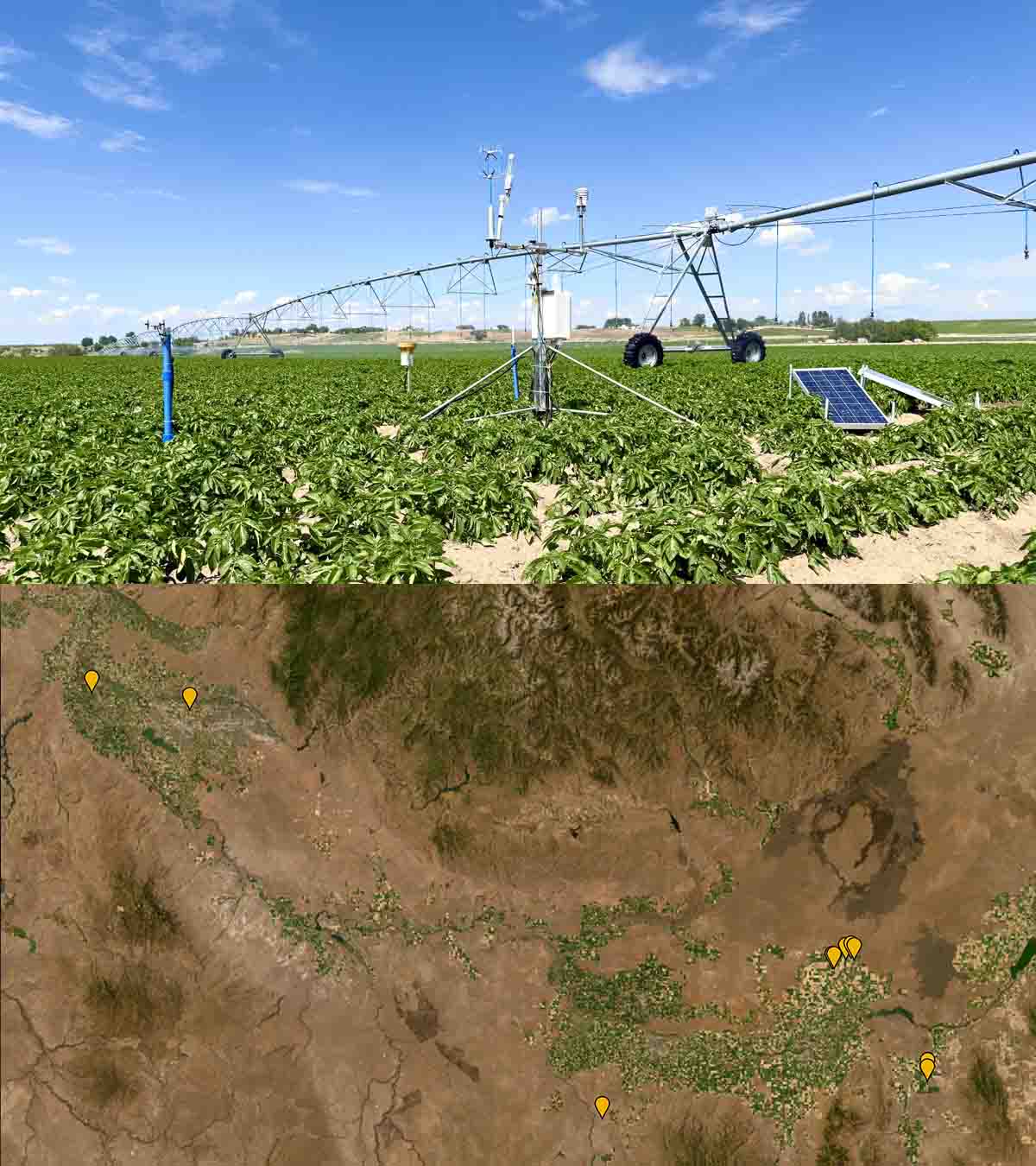Tracking Crop Water Use
August 13, 2025
A University of Idaho researcher has established a network of field-based monitoring stations throughout southern Idaho, generating data to develop and improve models assessing the volume of water lost from crops through evapotranspiration (ET).
Idaho water managers administer water rights based on diversions — the volume of surface water that irrigators divert or groundwater that they pump from wells. However, diversions include not only consumed water through ET, but also unconsumed water that returns to streams or aquifers and becomes available to other downstream irrigators.
Meetpal Kukal, an assistant professor of hydrologic science and water management, believes a more comprehensive, fair and effective method of water accounting would be to also track the consumptive use of water emitted from foliage and soil as vapor through ET.
Kukal and support scientist Clarence Robison established the SnakeFlux network, which includes clusters of sensors at ten locations spanning the Snake River Plain from Declo to Wilder, stationed within desert sagebrush and irrigated potato, sugarbeet, spring wheat, barley and turfgrass fields. Two of these locations are within the university’s Idaho Center for Agriculture, Food and the Environment (Idaho CAFE), located in Rupert. The network also includes data from three monitoring stations that are part of an ongoing collaborative project with the Idaho Department of Water Resources (IDWR) and U of I researchers Erin Brooks, Jason Kelley, and Kukal. Those three stations are funded through the Idaho Water Resources Board.
The stations use high-frequency sensors that measure eddies — swirls of air that carry heat, water and gases away from the ground. Data will be delivered every half hour throughout the growing season, enabling Kukal to estimate water use based on a formula involving the total energy partitioned to evaporate water and heat the soil and air. His team also measures critical soil, crop and management data from these locations to better infer what drives ET. He plans to make critical water data available to Idahoans and will continue to look for agricultural sites to monitor in other locations within the Snake River Plain in consequent growing seasons.
“ET is an invisible process, which means it’s really hard to measure,” Kukal said. “With this network, we’re trying to make gold-standard measurements for this process.”
Kukal envisions several applications for SnakeFlux data, such as updating crop coefficients, helping farmers improve their irrigation scheduling and helping the state address gaps in water accounting. A crop coefficient is a parameter used to predict ET based on the amount of water a crop needs for specific growth stages and weather conditions. Crop coefficients of many popular Idaho crop varieties were last measured in the 1970s.
Having ground-measured ET data will also help gauge and improve the performance of products that generate real-time ET estimates based on satellite imagery. IDWR, for example, is considering using one such product, called OpenET, for keeping tabs on the state’s water consumption.
“Evaluating those products has recently been a really big priority for all of the western states,” Kukal said.
Kukal is making field-specific SnakeFlux data available on a website to commercial growers who have allowed him to locate sensors in their fields. He’s also been in communication with commodity commissions, industry and water managers to demonstrate applications for SnakeFlux, based on the potential to help farmers make crop-specific adjustments to improve their water management. Kukal is seeking financial and broader stakeholder support for U of I’s ET monitoring efforts.

About the University of Idaho
The University of Idaho, home of the Vandals, is Idaho’s land-grant, national research university. From its residential campus in Moscow, U of I serves the state of Idaho through educational centers in Boise, Coeur d’Alene and Idaho Falls, nine research and Extension centers, plus Extension offices in 42 counties. Home to more than 12,000 students statewide, U of I is a leader in student-centered learning and excels at interdisciplinary research, service to businesses and communities, and in advancing diversity, citizenship and global outreach. U of I competes in the Big Sky and Western Athletic conferences. Learn more at uidaho.edu.






